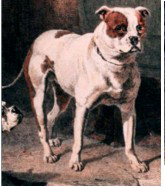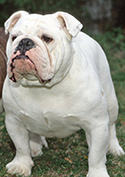Before I begin some may ask me why do I post this information, do I get slack from other breeders. I say who cares we are supposed to look out for the dogs and what’s best for them correct?
Politics aside here are some Breed Standard Interesting Tidbits….
The Cane Corso Breed Standard is important to read to get familiar with this rare breed. Since these are Italian Dogs, I decided to post the Breed Standard used in Italy and Europe (FCI). This breed has only been in the states since 1988, I think the Italians know more about their ancient breed than the Americans.
Are you confused on Colors? Since there is so many Opinions….
The colors of the Cane Corso have been updated for the standard in recent years. It is important to note that, unlike popular opinion, this breed has come in a variety of colors throughout the Cane Corso working dog history. Farmers have bred coloration over the years to help with their live stock needs. Many colors of Cane Corso have been documented over the years, as well as all white ones, That’s right White!!!. You can the Italian Center for preservation and breeding of the working dogs, you will see a variety of colors in these photos.
See the photo below of a Cane Corso from Italy, this is a typical ‘Traditional Cane Corso and in rural South Italy today you will see many who look like this.
Here are some videos of a Traditional Cane Corso Puppy at our Farm.
Color matters when showing your dog. For pet/companion Cane Corsos, in my opinion, the most important thing is to have a good healthy dog, with an excellent temperament.
A quick look at online classified ads or websites, and you may become confused if you are not familiar with the ‘true’ definition of the Cane Corso. Many breeders, will often boast of their 150 pound Cane Corsos. I always tell people, I already have a horse, I do not need one in my home.
What weight is a Cane Corso supposed to be? The Fédération Cynologique Internationale (FCI) standard is very specific. They clearly state the ideal dogs to stand 23–28 in at the withers, with females in the lower range 23–26 in, and males in the higher 24–28 in. Weight should be in keeping with the size and stature of these dogs, ranging from 99 to 110 lb for males and from 88 to 100 lb for females. I truly agree with the (FCI), since they insist that the Cane Corso should have a specific weight minimum and maximum. This I feel is important as it prevents the breed from being changed, by irresponsible breeders. The FCI does not emphasize the colors as much as Americans, and are more concerned with the over all structure of the dog. The Europeans clearly define the weight of the Cane Corso in their outline, where the American Cane Corso standard suggests a ‘height’ with no weight restrictions. Maybe this is why the American Corsos tend to develop hip problems more frequently since the American notion of ‘Super Size It’ should not be applied to our dogs. I feel the Euro version is better for the dog in the long run since they will have less health problems and more years in life. This is why I clearly support this breed standard and will breed dogs to fit within the specific parameters outlined by the F.C.I.
Changing the breed? Not if I can help it.
If we look at history, we will see examples of breeds changing over time as people desire a certain fashion at the expense of the dog.
Let’s use the bulldog as our example. In an 1817 painting (below) you will see a clear picture of how the bulldog once looked. It was hardy, strong and a fast running playmate.


On the right, we see the Modern ‘Bulldog’ plagued with health problems. Problems such as eye, joint and teeth are common. Almost all bulldogs will require c section during birth. Bettering the breed should be the goal of the breeder, not changing the health to to the fashion flavor of the day, at the expense of the dog.
At San Rocco, you will not get an over sized Cane Corso, you will get one that is bred to conform to the FCI standard, and one with a supreme temperament. I am not doing this to conform, or to a ‘style or a new breed’ fashion, I am not breeding to see what newest fashion sells. I am doing this for my passion and to preserve the history of this breed, and provide a lovable great tempered dog that will enrich families. If just one family who would break up stays together because of the enhanced bond a well bred dog can potentially create, then my job has been completed.
Origin: Italy
Date of publication of the original standard effective : 12.03.1999
Utilization : Guard , defense, police and tracking .
CLASSIFICATION FCI: Group Molossian
Selection 2.2 Molossian
Without Working Trial
Brief Historical Summary
Direct ancestor is the old Roman Molossian . Formerly scattered all over Italy , more recently there was only prevalent in the Province Apulia and in the adjacent regions of southern Italy. Its name derives from the Latin ” cohors “, which means protector, guardian of farms.
General Appearance
Dog medium-large, rustic, strongly built but elegant , dry, with powerful muscles and long .
Important Proportions
The length of the head reaches 36 % of the height at the withers. The dog is somewhat longer than high .
Behavior and Temperament
Guardian of property, family and livestock, extremely agile and responsive. In the past, were used for herding cattle and hunting big game.
Head: Large and typically molossoid; the upper longitudinal axes of the skull and the muzzle converge slightly .
Cranial Region
Skull: Broad, the zygomatic arches its width is equal to or greater than its length . Convex in front , it becomes fairly flat behind the forehead as far as the occiput . Medio-frontal furrow visible.
Stop: Marked
Facial Region :
Nose: Black and large with ample, open nostrils , on the same line as the nasal bridge .
Muzzle: Noticeably shorter than the skull (ratio muzzle : skull approximately 1:2 ) , very strong , with the front face is absolutely square and flat lateral surfaces are parallel , as wide as long . Profile of the nasal bridge is straight .
Lips: The upper lips hang moderately and cover the mandible, so that the lower profile of the muzzle is determined by the lips .
Jaws / Teeth : Jaws very large , thick and curved . Slightly undershot . Level bite acceptable, but not sought .
Eyes : Medium-sized , ovoid, looking forward, slightly protruding . Eyelids close fitting . Color of iris as dark as possible depending on coat color. Look intelligent and alert .
Ears: Triangular , drooping, with a wide set on high above the zygomatic arch . Almost always cropped in the shape of an equilateral triangle .
NECK: Strong , quite muscular, as long as the head .
Body: The body is somewhat longer than height at withers , strongly built , but not squat .
Withers: Pronounced, rising above the level of the croup .
Back: Rectilinear , very muscular and firm .
Loin : Short and solid.
Croup: Long, wide, slightly inclined .
Chest: Well developed in three dimensions , reaches to the elbow.
TAIL: Set on rather high, very thick at the root , is docked at the fourth vertebra . In action carried high, but never curled nor erect .
Arts
Front limbs :
Shoulder : Long, oblique, very muscular .
Arm : powerful .
Forearm: Straight, very strong .
Carpus and pasterns: Elastic .
Foot: cat
Hindquarters
Upper thigh: Long , broad and convex posteriorly.
Lower thigh: Strong, not fleshy .
Hocks: Moderately angulated .
Hock: Thick and sinewy .
Feet : a little ‘ less compact than the forefeet .
Movement: hand extended trot . The preferred gait is the trot .
Skin: Fairly thick, rather adherent to the underlying layers .
Coak
Hair: Short hair but not smooth , with vitreous texture , shiny , adherent, very dense with a light undercoat .
Color: black, dark gray , slate , light gray , light fawn , deer fawn , dark fawn , brindle (stripes on different shades of fawn or gray ) . In fawn colored and brindle dogs a black or gray mask the extent of which is limited to the muzzle should not go beyond the eye line . Allowed a small white patch on the chest, toes and on the nose bridge .
Size and weight
Height at the withers :
cm in males . To 64 cm. 68
cm in females . To 60 cm. 64
with cm tolerance . 2 more or less .
Weight:
males from 45 to 50 Kg
females from 40 to 45 kg .
Faults: Any departure from the characteristics indicated in the description of the various regions constitutes a fault which when judging must be penalized according to its seriousness and its dissemination .
Serious faults:
– Clear parallel axes of the skull and muzzle , very marked converging , face side of the muzzle converging ;
– Scissor bite, pronounced and disturbing undershot ;
– Truffle partial depigmentation ;
– Tail brought to candle or a ring ;
– Height : above or below the limits shown ;
– Pace : amble continued .
Disqualifying faults :
– Diverging axes of the skull and muzzle ;
– Overshot ;
– Nose bridge resolutely hollow or ram ;
– Truffle : total depigmentation ;
– Eye : moderate and bilateral depigmentation of the eyelids, gazzuoli , bilateral strabismus ;
– Tail : anurismo , brachiurismo , artificial or congenital ;
– Sleeping Semi-long , smooth or fringed ;
– All colors not prescribed, white patches too wide .
Note: Male animals should have two apparently normal testicles fully descended into the scrotum.
Here are some links for more reference on the Cane Corso Breed Standard:
1.) AKC Cane Corso Breed Standard
2.) ICCF Cane Corso Breed Standard
3.) International Cane Corso Pedigree Database